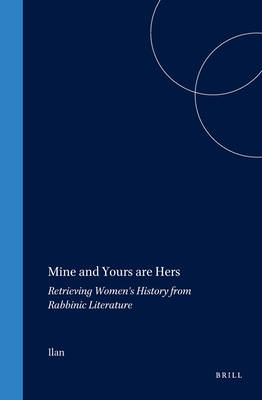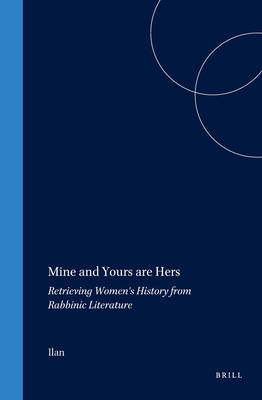
- Afhalen na 1 uur in een winkel met voorraad
- Gratis thuislevering in België vanaf € 30
- Ruim aanbod met 7 miljoen producten
- Afhalen na 1 uur in een winkel met voorraad
- Gratis thuislevering in België vanaf € 30
- Ruim aanbod met 7 miljoen producten
Zoeken
€ 392,45
+ 784 punten
Omschrijving
This book discusses the interaction between history, rabbinic literature and feminist studies. Recent approaches to rabbinic literature have overturned the traditional view of these writings and new literary methods were suggested, mostly denying them all historical value. But rabbinic literature constitutes the main source for the lives of Jews in Palestine and Babylonia during the late Roman period, and thus should not be totally rejected. This study suggests a new post-literary approach, i.e. it discusses the residue of the texts after these have been analyzed and dissected by literary critics.
But mainly this is a book about women's history, adopting many assumptions of feminist criticism about the androcentric nature of all ancient texts, and approaches them with due suspicion. The Rabbis treated women differently from the way they treated men. This resulted in the former's marginalization and manipulation by the texts. On the other hand, however, it created an ironic situation whereby principles useful for the recovery of historical information on women, are useless when applied to men. This study describes such principles and demonstrates them with the help of many examples.
But mainly this is a book about women's history, adopting many assumptions of feminist criticism about the androcentric nature of all ancient texts, and approaches them with due suspicion. The Rabbis treated women differently from the way they treated men. This resulted in the former's marginalization and manipulation by the texts. On the other hand, however, it created an ironic situation whereby principles useful for the recovery of historical information on women, are useless when applied to men. This study describes such principles and demonstrates them with the help of many examples.
Specificaties
Betrokkenen
- Auteur(s):
- Uitgeverij:
Inhoud
- Aantal bladzijden:
- 346
- Taal:
- Engels
- Reeks:
- Reeksnummer:
- nr. 41
Eigenschappen
- Productcode (EAN):
- 9789004108608
- Verschijningsdatum:
- 1/11/1997
- Uitvoering:
- Hardcover
- Formaat:
- Genaaid
- Afmetingen:
- 165 mm x 246 mm
- Gewicht:
- 793 g

Alleen bij Standaard Boekhandel
+ 784 punten op je klantenkaart van Standaard Boekhandel
Beoordelingen
We publiceren alleen reviews die voldoen aan de voorwaarden voor reviews. Bekijk onze voorwaarden voor reviews.








